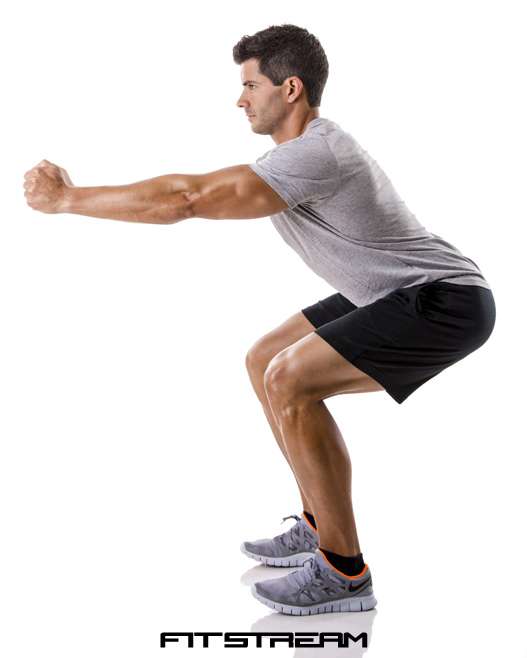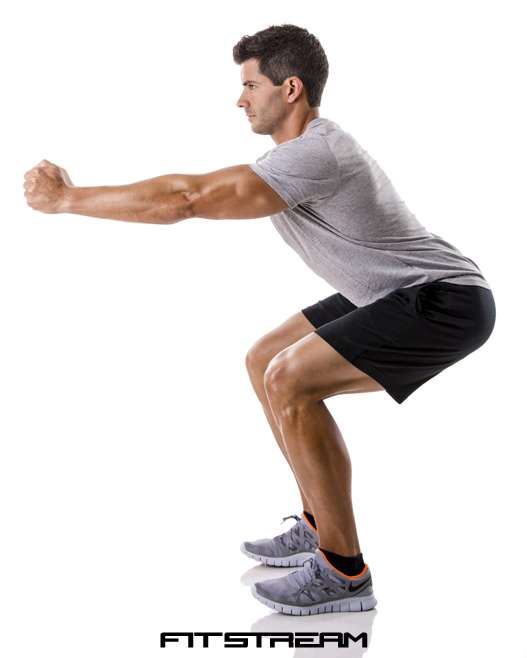So you’ve been hearing a lot about bodyweight squats lately and you’re wondering if they are actually worth incorporating into your workout routine. Well, you’re in the right place! This article will give you the lowdown on whether or not bodyweight squats are an effective choice for your workouts. We’ll explore the benefits, the muscle groups they target, and how to properly perform them to get the most out of your sweat session. Say goodbye to fancy equipment and hello to the simplicity of bodyweight squats!
Benefits of Bodyweight Squats
Improved lower body strength
Bodyweight squats are a great exercise for improving lower body strength. By engaging muscles such as the quadriceps, hamstrings, glutes, and calves, bodyweight squats help to strengthen the muscles in your legs and contribute to better overall strength. This can be beneficial for daily activities that require lower body strength, such as climbing stairs or carrying heavy objects.
Increased muscle mass
In addition to improving lower body strength, bodyweight squats can also contribute to increased muscle mass. When you perform bodyweight squats, your muscles are forced to work against your body weight, which helps to stimulate muscle growth. Over time, this can lead to a more toned and defined lower body.
Enhanced functional fitness
Bodyweight squats are not only effective for building strength and muscle mass, but they also enhance functional fitness. Functional fitness refers to the ability to perform everyday tasks efficiently and safely. By improving lower body strength, balance, and stability, bodyweight squats can help you move with ease during activities such as bending down to lift something or getting up from a seated position.
Improved balance and stability
Another benefit of bodyweight squats is improved balance and stability. During this exercise, you have to maintain a stable position while bending and straightening your knees. This challenges your core muscles, as well as the muscles responsible for balance and stability. By regularly incorporating bodyweight squats into your routine, you can enhance your overall balance and stability, which can be particularly helpful in preventing falls and injuries.
Effectiveness of Bodyweight Squats
Comparison to weighted squats
While weighted squats may provide additional resistance, bodyweight squats offer their own unique set of benefits. Bodyweight squats allow you to focus on using your own body weight as resistance, which can be more accessible for beginners or those without access to weights or a gym. Additionally, bodyweight squats can be incorporated into various workout routines and can serve as a foundation for progressing to more challenging exercises.
Muscles targeted
Bodyweight squats target multiple muscle groups, making them an effective compound exercise. The main muscles worked during bodyweight squats include the quadriceps, hamstrings, glutes, and calves. These muscles work together to perform the squatting motion, making it a comprehensive exercise for the lower body.
Progression and customization
One of the advantages of bodyweight squats is that they can easily be modified to match your fitness level and goals. As you become more comfortable with bodyweight squats, you can increase the intensity by incorporating variations such as jump squats or pistol squats. Additionally, bodyweight squats can be combined with other exercises to create a well-rounded workout routine that targets different muscle groups.
Caloric burn
Bodyweight squats can also contribute to a higher caloric burn during your workouts. As a compound exercise that engages multiple muscle groups, bodyweight squats require more energy expenditure compared to isolation exercises. This can have a positive effect on your overall calorie burn and help with weight management or weight loss goals.
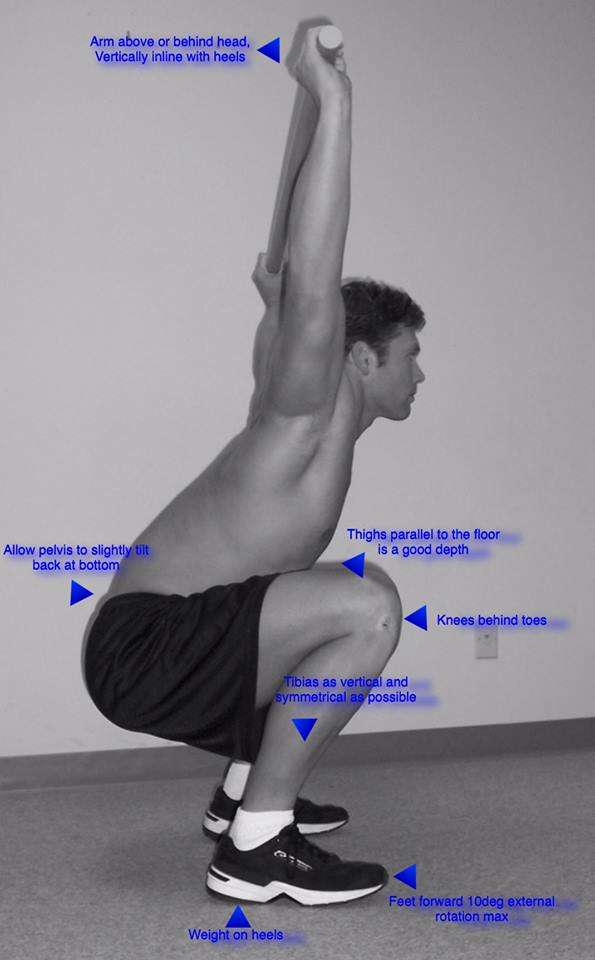
Proper Form and Technique
Feet positioning
To perform bodyweight squats with proper form, start by standing with your feet shoulder-width apart. Your toes should be pointed slightly outward, which helps with maintaining proper alignment throughout the movement. Avoid letting your knees collapse inward or roll outward as you squat.
Alignment and posture
Maintaining proper alignment and posture is crucial during bodyweight squats. Keep your chest lifted, shoulders back, and spine neutral throughout the entire movement. Avoid leaning too far forward or backward, as this can put excessive strain on your lower back.
Range of motion
Aim for a full range of motion during bodyweight squats to maximize the benefits and engage your muscles fully. Begin by lowering your hips back and down as if you are sitting back into a chair. Continue lowering until your thighs are parallel to the ground or slightly below. As you return to the starting position, make sure to fully extend your knees and hips.
Breathing techniques
Proper breathing techniques play a role in maintaining stability and control during bodyweight squats. Inhale deeply as you lower your body down, and exhale as you push through your heels to return to the starting position. This rhythmic breathing helps to stabilize your core and provide additional support during the exercise.
Variations and Modifications
Narrow stance squats
Narrow stance squats are a variation of bodyweight squats that target the inner thigh muscles (adductors) and place more emphasis on the quadriceps. To perform narrow stance squats, bring your feet closer together, so they are hip-width apart or slightly narrower. The movement and form remain the same as with regular bodyweight squats.
Sumo squats
Sumo squats, also known as plié squats, target the inner thigh muscles (adductors) and glutes to a greater extent than regular bodyweight squats. To perform sumo squats, start with your feet wider than shoulder-width apart, with your toes pointing outward. As you lower your body down, focus on pushing your knees outwards to engage the inner thigh muscles.
Pistol squats
Pistol squats are an advanced variation of bodyweight squats that place greater emphasis on single-leg strength and balance. To perform a pistol squat, stand on one leg with your other leg straightened out in front of you. Lower your body down by bending your standing leg, keeping the extended leg parallel to the ground. This exercise requires significant lower body strength and stability.
Jump squats
Jump squats add an explosive element to bodyweight squats, increasing the intensity and cardiovascular benefits. To perform jump squats, start with your feet shoulder-width apart. Lower your body down into a squat and explode upwards, jumping as high as you can. Land softly and immediately go into the next repetition.
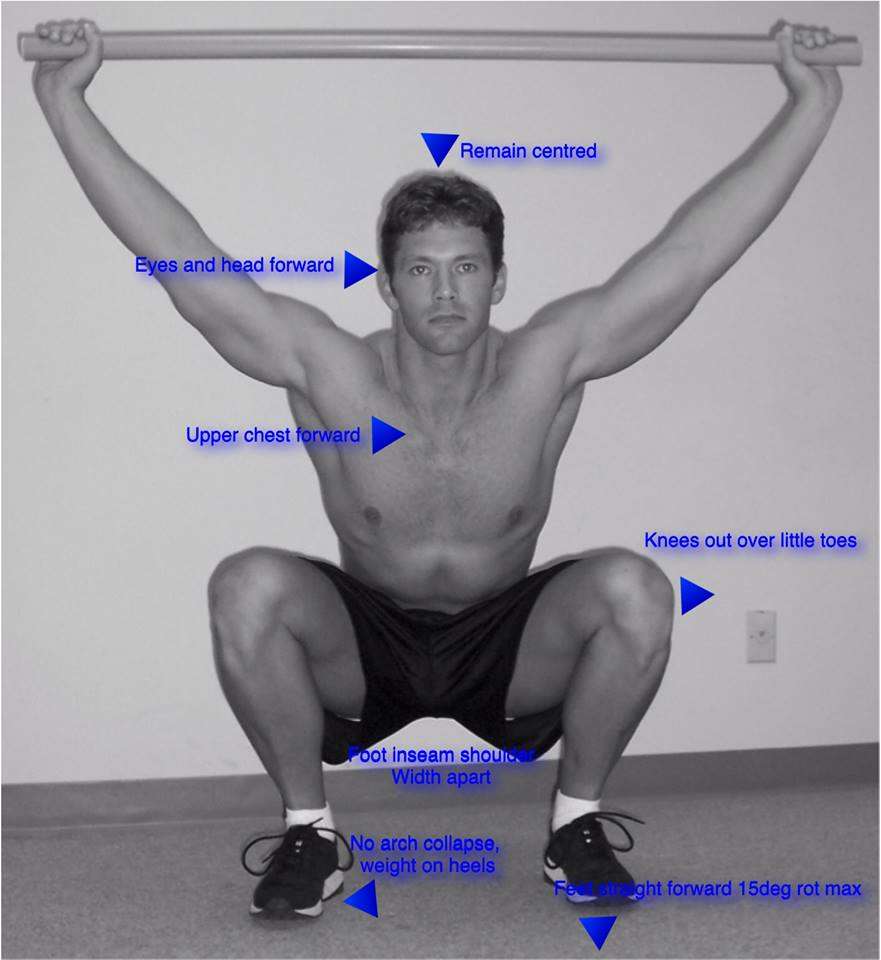
Incorporating Bodyweight Squats into a Workout Routine
Warming up
Before incorporating bodyweight squats into your workout routine, it is important to warm up properly to prevent injury and prepare your muscles for exercise. Engage in dynamic stretches, such as leg swings and hip circles, to loosen up your lower body. Additionally, consider performing some light cardio exercises, such as jogging or jumping jacks, to increase your heart rate and warm up your entire body.
Sets and repetitions
The number of sets and repetitions you perform during bodyweight squats can vary depending on your fitness level and goals. Beginners may start with 2-3 sets of 10-12 repetitions, gradually increasing as they become more comfortable with the exercise. Those looking to build strength and muscle mass may opt for higher sets and lower repetitions, such as 4-5 sets of 6-8 repetitions.
Rest periods
Rest periods between sets of bodyweight squats are important for allowing your muscles to recover and regain energy. Aim for around 1-2 minutes of rest between sets, adjusting as needed based on your personal fitness level and goals. If your focus is on cardiovascular endurance, you can shorten the rest periods to keep your heart rate elevated.
Combining with other exercises
Bodyweight squats can be effectively combined with other exercises to create a well-rounded workout routine. Consider pairing bodyweight squats with exercises such as push-ups, lunges, and planks to target different muscle groups and provide a full-body workout. Additionally, incorporating cardiovascular exercises like jumping jacks or burpees between sets of bodyweight squats can increase the intensity and calorie burn of your workout.
Challenges and Limitations
Limited resistance
One of the limitations of bodyweight squats is the limited resistance they provide compared to weighted squats. As your muscles adapt and become stronger, you may reach a plateau where bodyweight squats are no longer challenging enough to stimulate further strength and muscle gains. At this point, incorporating additional resistance, such as dumbbells or barbells, may be necessary to continue progressing.
Plateauing progress
Similar to any exercise, bodyweight squats may lead to a plateau in progress if performed consistently without variation or progression. To continue seeing improvements, it is important to continuously challenge your muscles by incorporating variations, increasing resistance, or adjusting sets and repetitions. Continual progression will help you avoid plateaus and continue making strides in your fitness journey.
Inability to target specific muscles
While bodyweight squats target multiple muscle groups in the lower body, they may not be as effective for isolating and targeting specific muscles. If you have specific muscle groups that you want to focus on, such as the glutes or hamstrings, incorporating additional exercises that specifically target those muscles may be necessary.
Risk of overuse injuries
Just like with any exercise, improper form or excessive training volume can increase the risk of overuse injuries. It is important to listen to your body and avoid pushing through pain or discomfort. If you experience any persistent pain or discomfort during bodyweight squats, it is recommended to consult with a healthcare professional or a qualified fitness instructor to assess and correct your form.
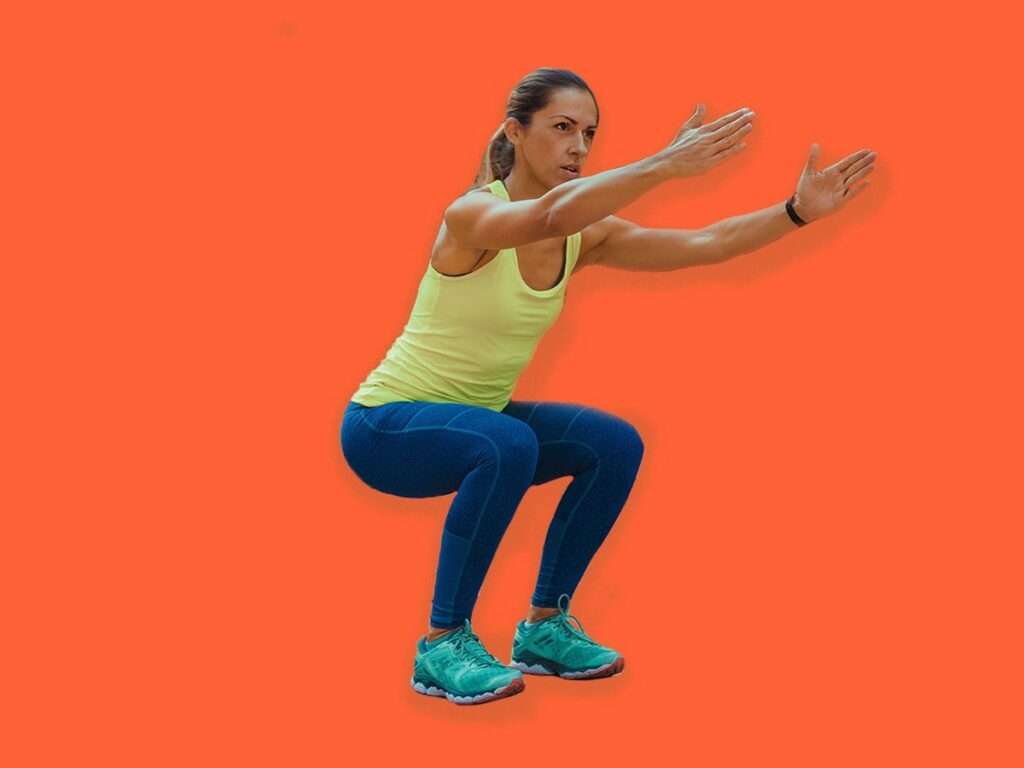
Tips for Maximizing the Benefits of Bodyweight Squats
Adding explosive movements
To increase the intensity and muscular power required during bodyweight squats, consider adding explosive movements such as jump squats or squat jumps. These movements engage fast-twitch muscle fibers and contribute to improved explosiveness and power in your lower body.
Using tempo variations
Changing the tempo at which you perform bodyweight squats can target different muscle fibers and enhance overall muscle development. Experiment with variations such as slow eccentrics (lowering phase), pause squats (holding the bottom position), or explosive concentrics (rising phase) to challenge your muscles in different ways.
Incorporating plyometrics
Incorporating plyometric exercises, such as box jumps or squat jumps, alongside bodyweight squats can enhance power, explosiveness, and cardiovascular endurance. Plyometrics involve rapid stretching and contracting of muscles and can add a dynamic element to your workout routine.
Including single-leg variations
Single-leg variations, such as single-leg squats or Bulgarian split squats, can help address muscle imbalances and improve overall lower body strength. These variations require greater stability and engage the glutes, hamstrings, and quadriceps to a higher degree.
Common Mistakes to Avoid
Knee alignment
One common mistake during bodyweight squats is allowing your knees to collapse inward or roll outward. This puts excessive stress on the knee joint and can lead to discomfort or injury. Focus on keeping your knees in line with your toes throughout the entire movement.
Lack of depth
Another common mistake is not squatting to a proper depth. Failing to lower your body down enough can limit the engagement of the targeted muscles and reduce the effectiveness of the exercise. Aim to lower your hips until your thighs are parallel to the ground or slightly below.
Rounding the back
Maintaining proper spinal alignment is crucial during bodyweight squats. Avoid rounding your upper or lower back, as this can put unnecessary strain on your spine and increase the risk of injuries. Keep your chest lifted, shoulders back, and spine neutral throughout the entire movement.
Stressing the neck
During bodyweight squats, it is common to inadvertently strain the neck by excessively tilting the head up or down. This can lead to neck discomfort or tension. Instead, keep your gaze forward or slightly upward to maintain a neutral and relaxed neck position.
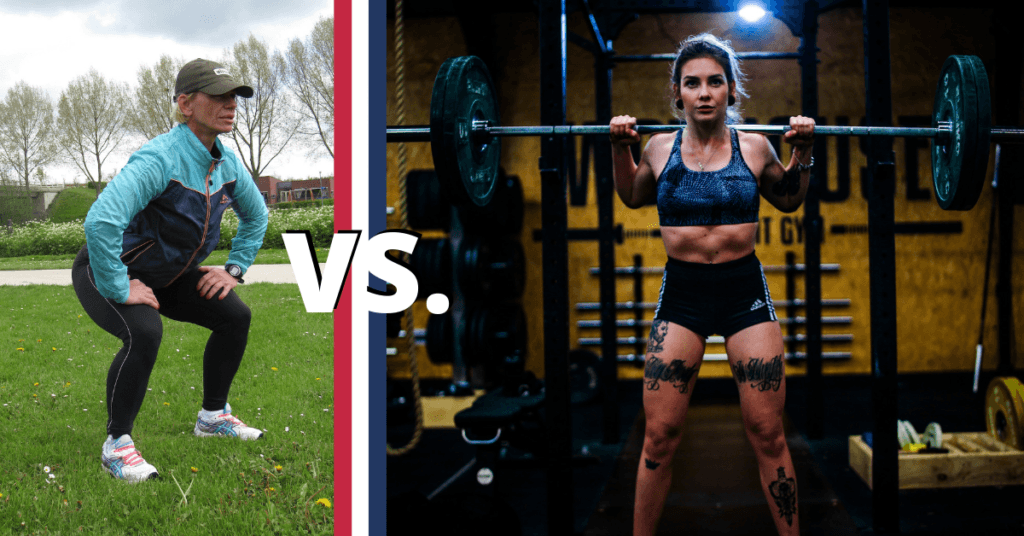
Safety Precautions
Consulting a healthcare professional
Before starting any workout program, including bodyweight squats, it is advisable to consult with a healthcare professional, especially if you have any pre-existing medical conditions or injuries. They can provide guidance specific to your needs and help ensure that bodyweight squats are safe and appropriate for you.
Gradual progression
Avoid jumping into advanced variations of bodyweight squats or progressing too quickly. Gradual progression allows your body to adapt and build strength safely. Start with the basic bodyweight squat and progressively increase the difficulty level as you become more comfortable and gain strength.
Listening to your body
The most important safety precaution when performing bodyweight squats is listening to your body. If you experience pain, discomfort, or any unusual sensations, it is important to stop and assess the situation. Pushing through pain can lead to injuries, so prioritize your safety and well-being above all else.
Proper warm-up and cooldown
To minimize the risk of injuries, it is important to warm up before performing bodyweight squats and to cool down afterward. A proper warm-up increases blood flow to the muscles, prepares them for exercise, and reduces the risk of strains or pulls. A cooldown routine, including light stretches, helps to relax the muscles and prevent post-workout stiffness.
Conclusion
Bodyweight squats offer numerous benefits for improving lower body strength, increasing muscle mass, enhancing functional fitness, and improving balance and stability. They can be effective even when compared to weighted squats, target multiple muscle groups, and can be modified to suit different fitness levels and goals. Proper form and technique, along with variations and modifications, allow for customizable workouts. However, there are challenges and limitations, such as limited resistance and the need for progressive overload. By incorporating tips for maximizing the benefits and avoiding common mistakes, bodyweight squats can be a safe and effective addition to any workout routine. Remember to prioritize safety, consult with professionals if needed, and listen to your body to achieve the best results.
